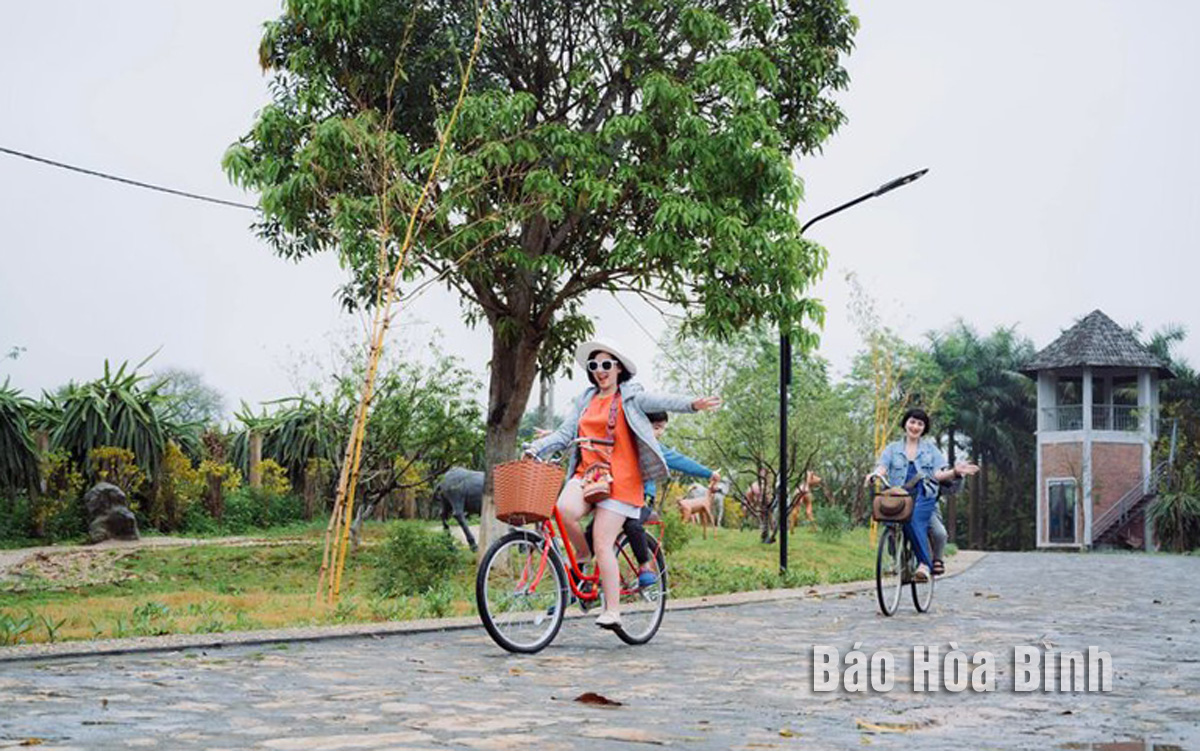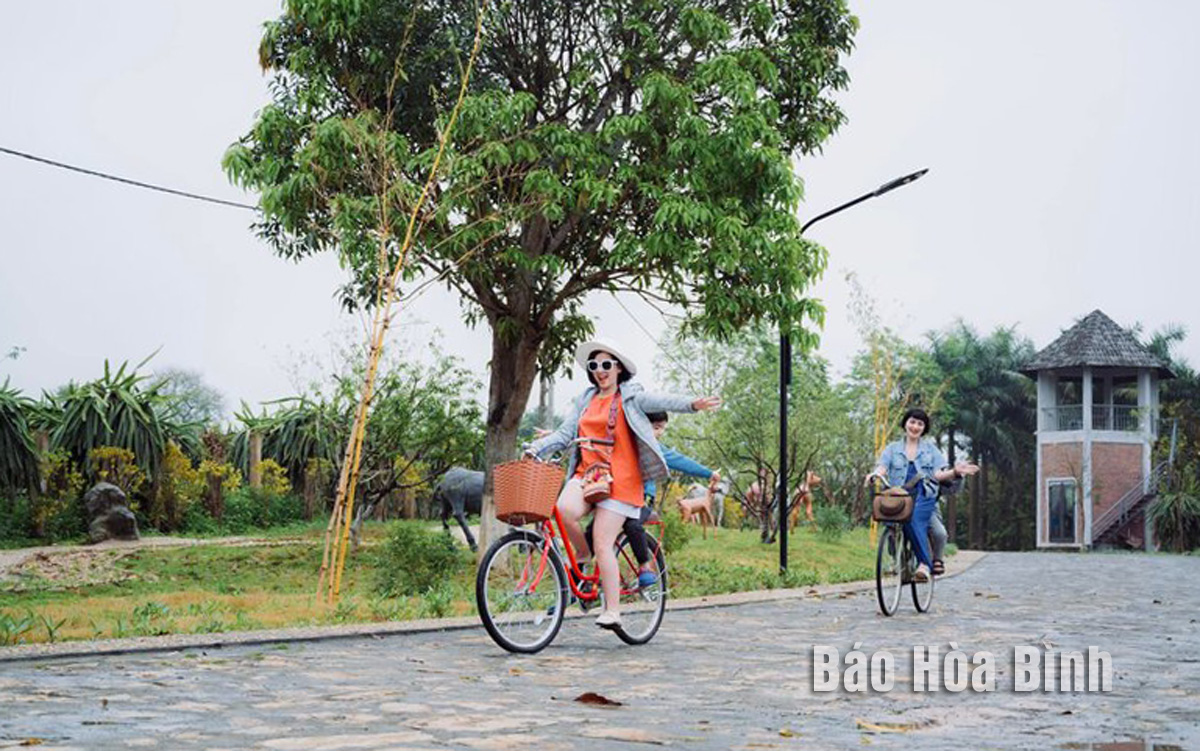
After three years of implementing Resolution No. 05-NQ/HU, dated June 7, 2021, issued by the Lac Thuy Party Committee’s standing board on local tourism development for 2021-2025, the district has focused on forming distinctive cultural products linked to tourism to attract visitors. Its efforts have led to increasing tourist arrivals and tourism revenue, contributing to economic restructuring, job creation, state budget revenue collection, and higher living standards.
Tourists enjoy various activities at Soi Resort in Farm, Phu Thanh commune, Lac Thuy district.
Annually, the district organises nearly 20 traditional festivals. This year, the local Tien Pagoda Festival was elevated to a provincial-level event, with other festivals like the Nieng Temple Festival in Hung Thi commune and Rem Temple Festival in Chi Ne town also receiving attention and attracting local residents and tourists. Capitalising on funds from the state budget and national target programmes, the district has focused on developing infrastructure and technical facilities, as well as improving tourism services to foster sustainable tourism growth.
Lac Thuy boasts one provincial-level tourist site, namely the Tien Pagoda. In addition, six local tourism and commercial infrastructure projects are currently attracting investment, with a total registered capital exceeding 6.2 billion VND (248,000 USD). Housing 38 lodging facilities, one operational resort, and 296 food and retail establishments, the district welcomes a yearly average of 700,000 visitors, generating approximately 160 billion VND on an annual basis.
In 2023, construction began on the Huong Binh cablecar project, with a total funding of around 1.7 trillion VND. This project, linking Huong Pagoda with Tien Pagoda, is expected to become operational by late 2025.
The district prioritises developing unique tourism products, such as scenic and spiritual tours at Tien Pagoda and Niem Temple in Phu Thanh commune, historical tours at the relic site of the Chi Ne money printing factory, and eco-tours coupled with experiential activities at Soi Resort in Farm, Phu Thanh commune. Additionally, Lac Thuy has run stalls to showcase OCOP (One Commune One Product) items, including its orange, chicken, mushroom, honey, custard apple, dragon fruit, and Song Boi tea, within many tourism weeks and trade fairs. Attention has also been paid to the development of high-quality agricultural products in conjunction with garden and farm tourism.
The district has guided localities and tourist sites in planting and maintaining green spaces and flower roads to enhance the landscape, while working to ensure organisations and individuals involved in tourism businesses comply with legal regulations on environmental protection.
Currently, the local tourism sector employs over 4,000 people, with the rate of trained workers reaching 37.5%.
Nguyen Ngoc Van, vice chairperson of the Lac Thuy People's Committee, stated that the district plans to continue attracting tourism investments, developing human resources, and diversifying its unique tourism products. The focus will also be placed on promoting local crafts and enhancing marketing and promotional activities. Lac Thuy aims to build a linked tourism development chain connecting the district with Hanoi, Ha Nam, and Ninh Binh, the official noted.
A diverse chain of eco-tourism and resort destinations concentrated in Hoa Binh city and the districts of Tan Lac, Da Bac, and Luong Son… Along with the launch of several key high-quality resort tourism projects, these developments have reshaped the landscape and enhanced the appeal of Hoa Binh as a travel destination.
Boasting diverse terrain, a mild climate, and rich natural resources, Cao Phong district is increasingly asserting its place on Vietnam’s tourism map, attracting both domestic and foreign visitors. The district is renowned for its stunning landscapes, majestic mountains, a crystal-clear hydropower lake, and the unique cultural identity of local ethnic groups.
With its pristine landscapes, unique cultural heritage of Muong ethnic minority, and an expanding range of visitor experiences, Tan Lac district of Hoa Binh has fast become a captivating destination for both domestic and international tourists.
Until now, Sung village in Cao Son commune, Da Bac district remains the only Dao ethnic community in Hoa Binh province to develop a community-based tourism model. Beyond its untouched natural landscapes, cultural identity serves as the cornerstone attraction for visitors.
Alongside the diverse cultural identities of the Kinh, Muong, Tay, Thai, Dao, and Mong ethnic people, Hoa Binh province is also renowned as the "capital" of the northwestern Vietnamese cuisine, offering unique and distinctive dishes. At festivals, during Lunar New Year (Tet), or on significant family or community occasions, special dishes are prepared, leaving a lasting impression on visitors.
A Phong Linh (Yellow Tabebuia) flower garden in Thang village, Thach Yen commune, Cao Phong district is currently in full bloom, drawing a large number of visitors.



